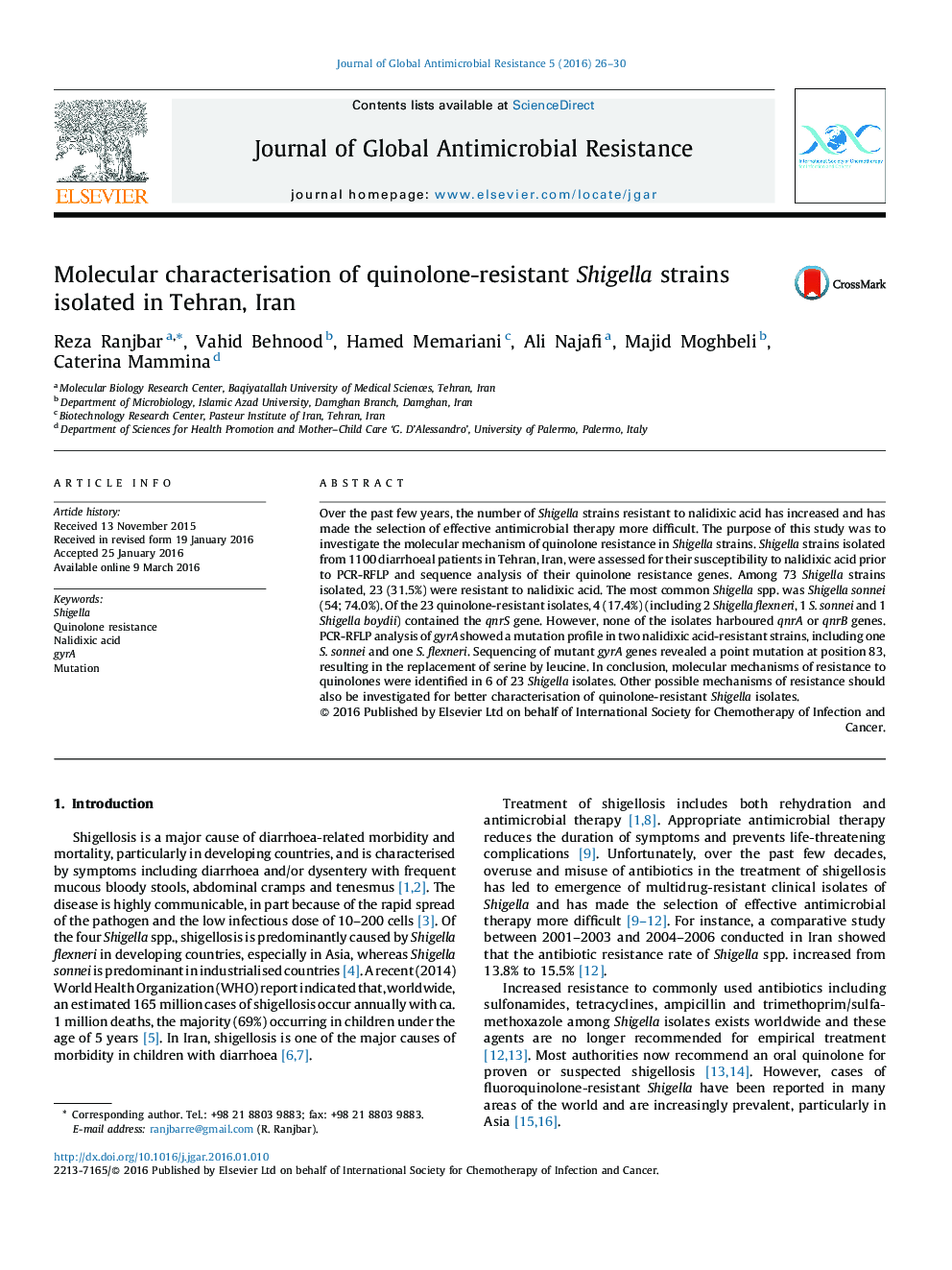| Article ID | Journal | Published Year | Pages | File Type |
|---|---|---|---|---|
| 3405592 | Journal of Global Antimicrobial Resistance | 2016 | 5 Pages |
•This is the firstFirst study reporting quinolone resistance determinants in Shigella from Iran.•More than 31% of clinical strains were resistant to nalidixic acid.•There was a significant increase in qnrS genes and mutations in the quinolone resistance-determining region (QRDR) of gyrA.•Point mutation in gyrA at position 83 (Ser83→Leu) is responsible for resistance.
Over the past few years, the number of Shigella strains resistant to nalidixic acid has increased and has made the selection of effective antimicrobial therapy more difficult. The purpose of this study was to investigate the molecular mechanism of quinolone resistance in Shigella strains. Shigella strains isolated from 1100 diarrhoeal patients in Tehran, Iran, were assessed for their susceptibility to nalidixic acid prior to PCR-RFLP and sequence analysis of their quinolone resistance genes. Among 73 Shigella strains isolated, 23 (31.5%) were resistant to nalidixic acid. The most common Shigella spp. was Shigella sonnei (54; 74.0%). Of the 23 quinolone-resistant isolates, 4 (17.4%) (including 2 Shigella flexneri, 1 S. sonnei and 1 Shigella boydii) contained the qnrS gene. However, none of the isolates harboured qnrA or qnrB genes. PCR-RFLP analysis of gyrA showed a mutation profile in two nalidixic acid-resistant strains, including one S. sonnei and one S. flexneri. Sequencing of mutant gyrA genes revealed a point mutation at position 83, resulting in the replacement of serine by leucine. In conclusion, molecular mechanisms of resistance to quinolones were identified in 6 of 23 Shigella isolates. Other possible mechanisms of resistance should also be investigated for better characterisation of quinolone-resistant Shigella isolates.
